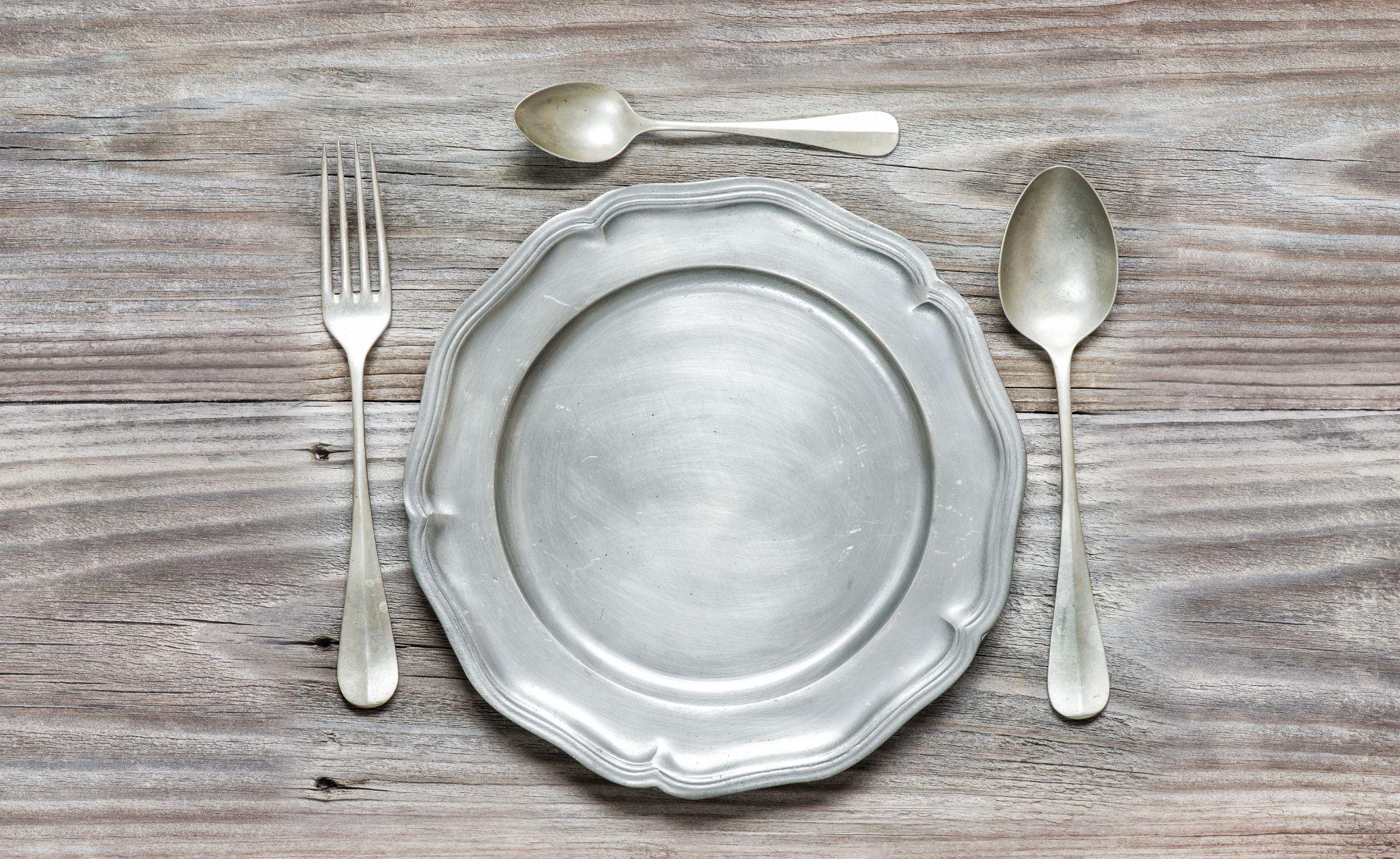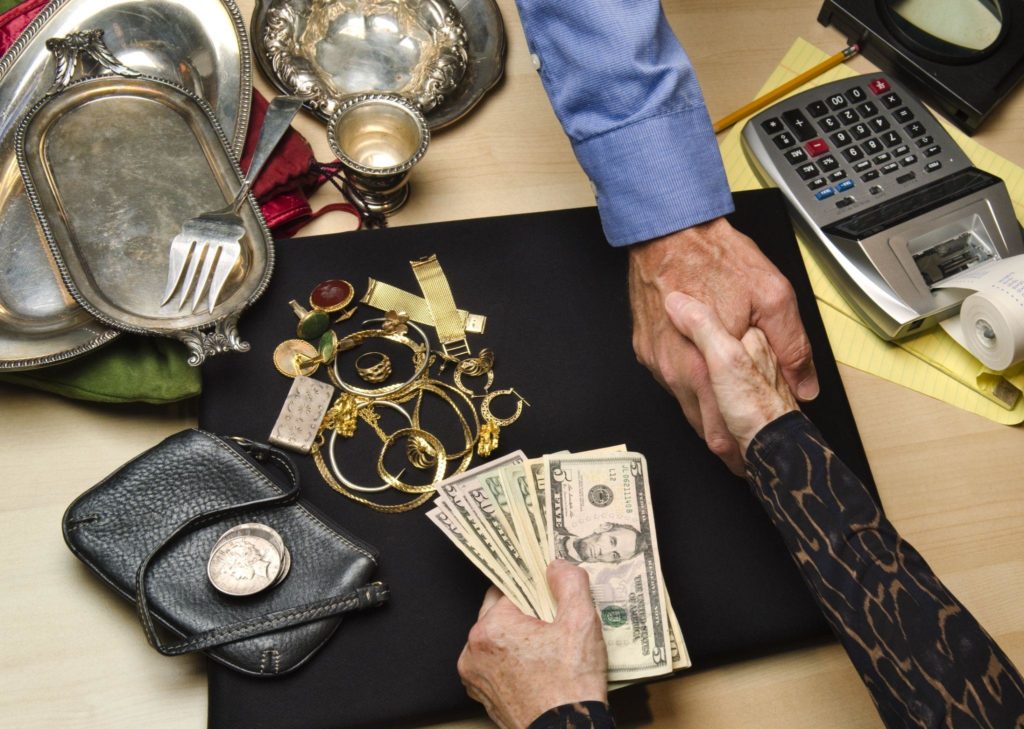Do you have a set of old sterling silver flatware? You’re hardly alone—these are very common kinds of luxury items that can be found in households across the country. If you’re thinking about selling your sterling silver flatware, there is a wide range of dealers out there, like Cash for Gold USA, who buy sterling silver flatware and other precious metals and gemstones.
Cash for Gold USA buys precious metals and gemstones like gold, sterling silver, platinum, diamonds, and more. Request a free Appraisal Kit to ship (insured!) your valuables to Cash for Gold USA where our our certified Jewelry Experts will appraise your valuables using the latest technology and send you an offer.
Before you go further, though, it’s best to learn a few things about sterling silver and the characteristics that make it valuable. What follows is an overview of sterling silver flatware and the ways you can sell it to make some extra cash.
What Is Sterling Silver?
It’s important to understand exactly what is meant by the term “sterling silver.” Contrary to what some believe, this is not a generic advertising phrase; it has a specific meaning that refers to the composition of the metal. To qualify as sterling silver, flatware must contain 92.5% silver and 7.5% another metal. Usually the other metal is copper, but zinc and nickel are fairly common alternatives.
Why does sterling silver have this particular composition? Fine silver (sometimes called pure silver) is just too soft to be used for table utensils. Although fine silver, which is 99.9% pure, is acceptable in bullion coins, it’s not very helpful when it comes to the business of cutting and stabbing steaks and other dinner servings. That’s why silver intended for these applications must be mixed with another metal to enhance the durability of the utensil.
One of the problems with sterling silver is that the additional metal needed to strengthen it also makes it vulnerable to tarnishing. Fortunately, this issue can be corrected by careful cleaning.
Sterling Silver Vs. Plated Silver
Sterling silver should never be confused with plated silver, which is much less valuable. Plated silver, as the name suggests, has a covering of silver over another metal, such as nickel, copper, or pewter. This is often achieved through electroplating—that is, adding a thin layer of silver to the metal through electrolysis.
Flatware with plated silver has low resale value, as it contains only a modest amount of silver and it’s generally too much of a bother to remove it for its spot value. Plated silver pieces also usually don’t last as long as sterling silver utensils. Over time, the plated silver tends to wear away and expose the metal underneath.
However, it’s not always obvious whether you’re dealing with sterling silver or plated silver. This can be especially difficult if you don’t have anything on hand to which your flatware can be compared. For instance, plated silver is significantly heavier than sterling silver, but you need an example of both to detect the difference. How can you determine what kind of flatware you own?
Sterling silver pieces are almost always marked as such. Frequently seen markings for authentic sterling silver include:
- 925
- .925
- 5
- 925/1000
- SS
- Sterling
- Ster
Sterling silver flatware made in the U.S. at any time since the 1850s should have one of these marks, or a close variation. With non-U.S. sterling silver, things can get a little tricky. In many cases, the silver composition in these foreign-made items is lower than the 92.5% required in U.S.-made sterling silver products. They may be marked “800” (80% silver) or “900” (90% silver).
British-made sterling silver has multiple hallmarks that attest to the company, date of manufacture, and other key information. Looking up these hallmarks online can help you determine what you have.
Plated silver often has no markings at all. Some examples of plated silver flatware bear a marking that attests to their true composition. Frequently seen markings for plated silver include:
- EP (for “electroplated”)
- EPNS (for “electroplated nickel silver”)
- EPCA (for “electroplated copper alloy”)
- Silver On Copper
- EP On Copper
- IS (for “International Silver”; this refers to the U.S.-based International Silver Company)
- Triple (or Quadruple) Plate
If you’re not certain what kind of flatware you have in your possession, consider reaching out to a silver dealer for assistance.
A Brief History of Sterling Silver
Sterling silver is believed to have originated in England circa 1300. Many historians speculate that the term “sterling” derives from silver coins of the 12th century, known as “Easterlings.”
The heyday of sterling silver flatware arrived around 1840 and lasted for a hundred years. During this time, standards of etiquette emphasized the importance of abstaining from touching food with bare hands. Sterling silver utensils became the preferred instruments for dining. They were prized for both their elegance and their suitability for handling food.
The trend for dining with sterling silver caught on in the U.S., the United Kingdom, and continental Europe. For households that wanted the prestige of this type of flatware at a more reasonable price, plated silver became a popular alternative. A number of manufacturing companies in all three regions rose to the challenge of meeting public demand for attractive silver utensils. Some of the more well-regarded names in antique sterling silver flatware include Stieff, Wallace Silversmiths, Lunt Silversmiths, Reed & Barton, Alvin, Buccellati, and Towle Silversmiths.
In the pre-modern era, dinnertime was typically a lengthy, elaborate affair with multiple courses. This required the use of multiple sets of sterling silver flatware that would be replaced when appropriate. Diners would go through a large number of variously shaped forks, knives, spoons, and ladles. Other dinnertime accessories, such as tea sets, candlesticks, and coasters, were often made of sterling silver as well.
In the middle years of the 20th century, sterling silver flatware came to be seen as an expensive luxury that was no longer in tune with a modern era increasingly defined by low-cost fast food. The lengthy mealtimes that were associated with sterling silver became less common—and, as a result, so did sterling silver itself.
Today, many examples of authentic 19th century sterling silver and plated silver flatware are still in existence, offered for sale by dealers or socked away in private collections. In some families, sterling silver sets have been passed down from one generation to the next for well over a century. Some of these collections are very elaborate, containing literally hundreds of pieces.
Vintage sterling silver flatware that is in excellent condition can command high prices in the collector’s market.
Reasons to Sell Your Sterling Silver Flatware
A lot of people own sterling silver flatware, and there are a number of reasons why. Some families end up with a set of sterling silver utensils that were handed down to them from the previous generation. Some get flatware as a wedding gift. Still more people just enjoy having this kind of elegant silverware around as daily utensils. Even so, there are also several perfectly valid reasons why you might want to get rid of your sterling silver collection.
It’s difficult to maintain – There are many types of valuables that have few or no maintenance demands. You can simply put them away somewhere and forget about them, secure in the knowledge that nothing will happen that might cause harm. This is certainly not true of sterling silver, however. Utensils made from this metal alloy are prone to becoming tarnished, especially if they aren’t used often or are stored in a humid environment.
Sterling silver can also develop verdigris, a toxic greenish pigment that results from the oxidation of the copper content. Much of the time, it can’t be effectively removed without the aid of a specialist.
All this means is that you need to clean your sterling silver fairly often to keep it in good condition. In general, it’s best to do this by hand—the dishwasher just isn’t ideal when it comes to this type of flatware. Some silverware can even become damaged from the heat of a dishwasher.
For many people, it’s just not worth the bother to go through all this to keep their sterling silver flatware in good condition. Selling your flatware allows you to get rid of the burden involved with maintaining it—and make a few dollars in the process.
It’s old – Sometimes you just want to make a change. Keeping the same flatware around for years and years can get boring, even if it’s still in decent condition. You can sell your old flatware and use the money to buy a brand-new set that’s in a different style.
It’s taking up space – Old flatware requires room that could be devoted to other things. That’s why many households that embark on a thorough spring cleaning of the premises end up selling off their sterling silver flatware.
Price of silver is high – If you’re interested in selling silver of any kind, now is an excellent time to cash in. The spot price of silver is substantially higher than it was only a few years ago.
Fortunately, there is a thriving market for old sterling silver flatware. Finding a buyer for these old sets of utensils isn’t difficult, but it’s not always possible to get the price you prefer.
Determining the Value of Sterling Silver Flatware
Not all flatware made of sterling silver is equally valuable. There are multiple factors that go into determining the price you can reasonably expect to get from silver flatware buyers.
Current market value of silver – The spot price of silver is constantly in flux. Waiting just a few months to sell your flatware can result in a significantly higher or lower price. To figure out the value of your silver in terms of its spot price, you should calculate its weight in troy ounces. Keep in mind that your flatware collection will be no more than 92.5% silver.
Physical condition – Flatware tends to get dinged up over time, which can have a significant effect on the market value of your collection. Be aware that tarnish or verdigris can be removed, although you need to be cautious when doing this to ensure that you do damage the metal. If you are selling your flatware based on its spot price, however, its physical condition is not important.
Special designs – Some kinds of antique silver flatware have uncommon designs or patterns that are valued by collectors. For instance, Grande Baroque flatware by Wallace Silversmiths and Repoussé by Stieff are perennial favorites among collectors.
Custom markings – Monograms, personal initials, family names and other customized engraved features can be a problem if you’re selling your flatware on the collector’s market. Many buyers aren’t interested in flatware that bears someone else’s personally identifiable information. Again, this isn’t an issue if you’re selling to a buyer who cares only about the silver content of the pieces.
Completeness of the set – If you have a flatware set with all originally included pieces—knives, forks, spoons, serving utensils, etc.—it is worth more than a comparable set with one or more missing elements. However, it is possible to sell individual pieces. You’re more likely to get a good price for pieces that are uncommon on the collector’s market.
It’s not always clear whether a particular set of sterling silver flatware has substantial value as a collectible or is merely worth its spot price. To get a sense of the value of your set, try looking it up online. The prices you see for the same set can give you a ballpark figure of its worth in the marketplace. If you feel your flatware may be a rare collectible, you may wish to consult a specialist for an estimate.
At the very least, any sterling silver items will be worth the spot price of silver. Even pieces that are badly damaged or worn can be sold to a buyer who deals in these kinds of products.
Tips on Selling Your Sterling Silver Flatware
So you’ve determined that your flatware is authentic sterling silver and that it’s time to sell it. What now?
One way to sell your sterling silver is to find a brick-and-mortar storefront that deals with these types of collectibles. This isn’t necessarily your best option, however. There are several drawbacks associated with these kinds of dealers.
Brick-and-mortar (B&M) dealers will generally extend an offer well below the actual market value of the items. They have no choice in this—they have bills to pay. They have to bear the many expenses that inevitably go along with running a physical storefront—rent, taxes, and various other financial burdens that cut into their bottom line. All these factors influence the amount of money that they can pay you.
You may also have trouble with a B&M dealer if your flatware is damaged, worn, or in an otherwise less-than-ideal condition. Remember, even seemingly harmless markings like monograms are widely considered defects. These flaws lower the value of the flatware and make it difficult to sell on the collector’s market. As a result, many B&M dealers just don’t want to be bothered with substandard items like these.
Another issue is the varying levels of expertise you can encounter while dealing with a physical storefront. Some places that buy and sell sterling silver—like pawn shops—simply may not recognize the value of what you have. For them, sterling silver collectibles form only a small fraction of the items they handle on a daily basis. They have no specialized knowledge that might help them distinguish a typical set from a genuine collectible. That’s why it’s best to seek out a buyer who specializes in precious metals, not a general collector.
These are all reasons why an increasing number of people are reaching out to online buyers rather than B&M storefronts. This approach has a number of benefits that traditional shops and buyers can’t match, including:
Quick offers : You can get a quote almost as soon as your silver is received through the mail—often within 24 hours.
High payouts : An online seller will usually give you more money than a brick-and-mortar dealer.
Will accept damaged goods : Online buyers like Cash For Gold USA buy silver of all kinds, no matter what physical condition it’s in.
Convenient selling process : With an online buyer, you don’t have to travel. You only have to pack your silverware, and other silver or gold items you would like to sell, and send them to the buyer via postal mail.
When you work with Cash For Gold USA, you also get our Price “Beat” Guarantee: We will beat any competitor’s written offer or return your items to you free of charge.
All you need to do is fill out our online form to request your free Appraisal Kit that is insured for up to $100,000. The prepaid label comes with a tracking number, so you’ll be able to keep tabs on your silver during the shipping process.
As an experienced gold and silver dealer, we have a reputation for top-notch customer service. We deal in many popular brands, including but not limited to Allan Adler, Amston, Blackinton, Concord, Dominick & Haff, Durgin, Easterling, Fessenden, Frank Whiting, Gorham, Howard, International, Kirk, Knowles, Lunt, Manchester, Mauser, Mayer, Merrimac, Mount Vernon, National, Old Newbury Crafters, Oneida, Reed & Barton, Richard Dimes, Schofield, Shiebler, Frank Smith, Tiffany, Tuttle, Unger, Watson, Weidlich, Westmorland, and W&D Graff.
Source:
https://www.silvergallery.com/history-of-sterling-silver/
About Cash For Gold USA
Cash for Gold USA is a prominent online buyer of gold, silver, diamonds, platinum, and palladium in the United States. Since 2005, we have paid millions to thousands of customers for their unwanted or broken precious metal jewelry. We offer a quick and straightforward selling process, ensuring customers receive prompt and competitive offers for their items. Learn more about us and what our customers say about Cash for Gold USA, or request your free Appraisal Kit now:









